

Designed by Paul Smith 2006. This website is copyrighted by law. Material contained herewith may not be used without the prior written permission of FAUNA Paraguay. Photographs on this web-site were taken by Paul Smith, Hemme Batjes, Regis Nossent, Lars Hansen and Huguito Cabral and are used with their permission.
ON LOCATION IN THE PARAGUAYAN PANTANAL
Think Pantanal, think Brazil. That is the though process of most tourists wanting to visit this vast wetland, one of the best places in South America for observing wildlife. As in most things where tourism is concerned, Paraguay doesn´t often get a look in, despite counting on a not insubstantial area of Pantanal in the eastern Chaco. In the Brazilian Pantanal you´ll be herded into minibuses and taken around as part of large group, seeing lots of other minibuses full of similarly large groups along the way. In the Paraguayan Pantanal you´ll be lucky if you see another tourist, let alone a minibus, have to negotiate with a local boatman to take a trip along the winding waterways characteristic of the area and stay in a local hotel eating Pacu that the owner whipped out of the lake that same morning. Now you can´t tell me that doesn´t sound more appealing!
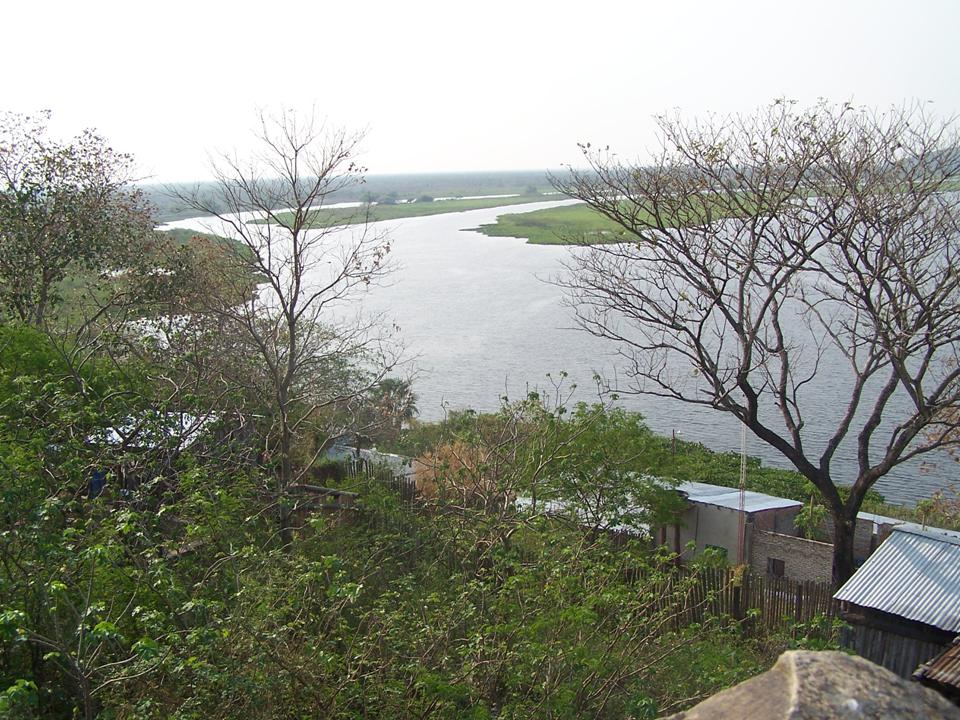
Nobody really knows what the correct definition of the Pantanal is. In times gone by it was once an inland sea, but today it appears to be a seasonally-flooded non-uniform transition zone from the palm savanna of the Low Chaco to the more forested, wet rainforests of Amazonia. Calling the Pantanal a wetland is generalizing too much - parts of it are dry, and other parts are forested. Accurately defining the Pantanal becomes so difficult in fact that many ecologists do not even recognize it as an independent biome at all, more as a meeting place of all the biomes that surround it. But whilst the geologists and the ecologists and any other -gists that might want to throw their oar in argue over exactly what
the Pantanal is, your average animal-watcher just wants to know what he or she can see there and how to go about doing it. So let me help you out!
The Paraguayan Pantanal is for the most part centred around the upper Rios Paraguay and Negro, facing Bolivia in the exteme north and Brazil in the east. The two main gateways to the Paraguayan Pantanal are the charming small towns of Fuerte Olimpo and Bahía Negra. Neither is easy to get to, you´ll either have to drive for two days via the central Chaco (the roads are not always passable year-round), boat for several days along the river, or fly in on a privately-chartered plane! Once you are there though you will immediately begin to notice that you are somewhere a bit different!
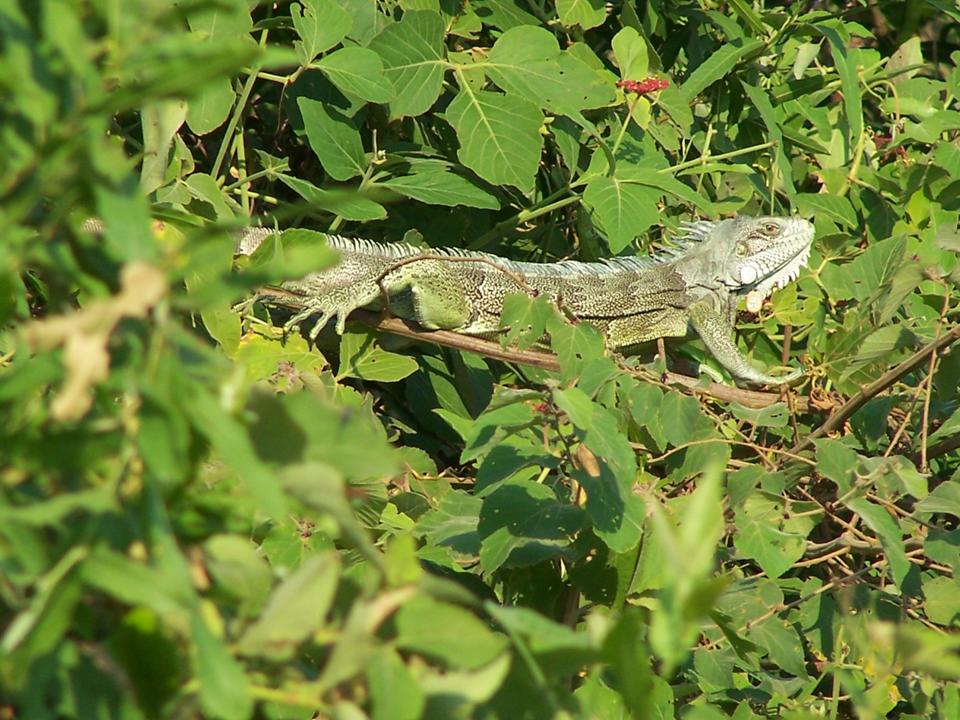
Overlooking Furnte Olimpo is the imposing solitary hill known as Cerro Olimpo. It is heavily forested and in the morning the bellows of Black Howler Monkeys ring out across the town, competing with the church bells calling the people to prayer. The Cerro is also a roosting place for Blue-fronted Amazons and Golden-collared Macaws. The streets of .the town are filled with Red-crested Cardinals, which have become accustomed to feeding on scraps left out by the villagers, whilst on the waterfront you can watch Black Skimmers skimming along, a host of herons and egrets flying to and from their roosts and Large-billed Terns wheeling around
The dirt roads coming into town are lined with roadside pools that are constantly filling and drying, sometimes spilling over onto the road (a nuisance if you actually want to get past!). As well as the resident snakes and Black Caiman that every one of these pools seems to have, there are usually a number of birds of prey hanging around ready to pluck out prey - notably Crane Hawks, Black-collared Hawks, Snail Kites, Savanna Hawks and Great Black Hawks. Once these pools begin to dry (a process that usually begins in April and is reaching its completion by October, when the rains come to fill them all again) fish become concentrated, writhing in the increasingly oppressive muddy sludge that is left and attracting clouds of predatory birds like Jabiru, Maguari and American Wood Storks, Buff-necked and Plumbeous Ibis and Grey-necked Wood-Rail which gather to take advantage of the fish´s misfortune. So ingrained is this system of filling and drying of these pools that many fish species have developed annual life-cycles, their eggs resting and drying in the mud like spores, seemingly coming back to life with the rains the following year. Other species like the Lungfish seal themselves in cocoons beneath the parched earth and emerge once conditions become more conducive to a fish-like lifestyle!
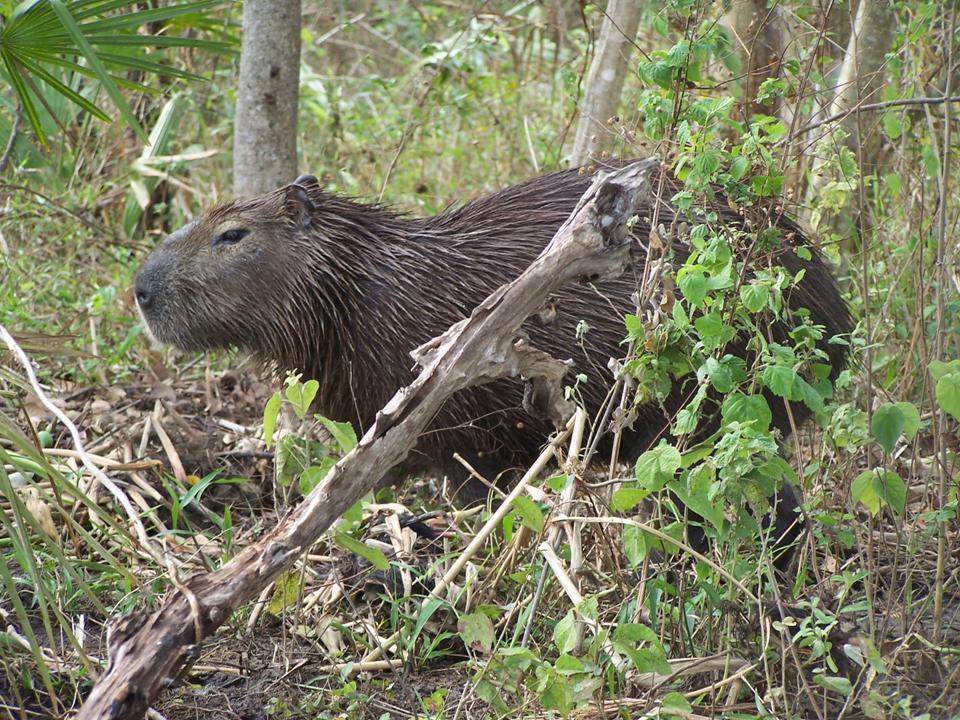
A boat trip along the creeks and inlets that spread vein-like from the Rio Paraguay is your best chance for seeing some of the more exciting animals. The noise of a motor boat is the signal for Capybara (left) to belly flop into the water in front of you, Marsh Deer nonchalantly crunch on water-lilies and a plethora of little marsh birds like Yellow-chinned Spinetail and Donacobius complain at your intrusion. A boat-trip from Bahía Negra further north is particularly worthwhile, especially if you enter the Rio Negro National Park. This is one of the best places in South America to see Giant Otter, and find some Terra Firma forest and you will see some real specialities of this area, the Cinereous-breasted and White-lored Spinetails (the latter a Pantanal endemic), the Common Tody-Flycatcher, surprisingly bolshy for someone so small, and spectacular species like Crested Oropendola and Swallow-tailed Hummingbird. Keep your eyes peeled on the riverside vegetation here, Green Iguanas (above) are common, but easily overlooked amongst the foliage, ditto Mato Grosso Antbird (left), noisy but frustratingly skulking - both can make you work hard for a good luck, and if you had any idea how long it took me to get this photo.......
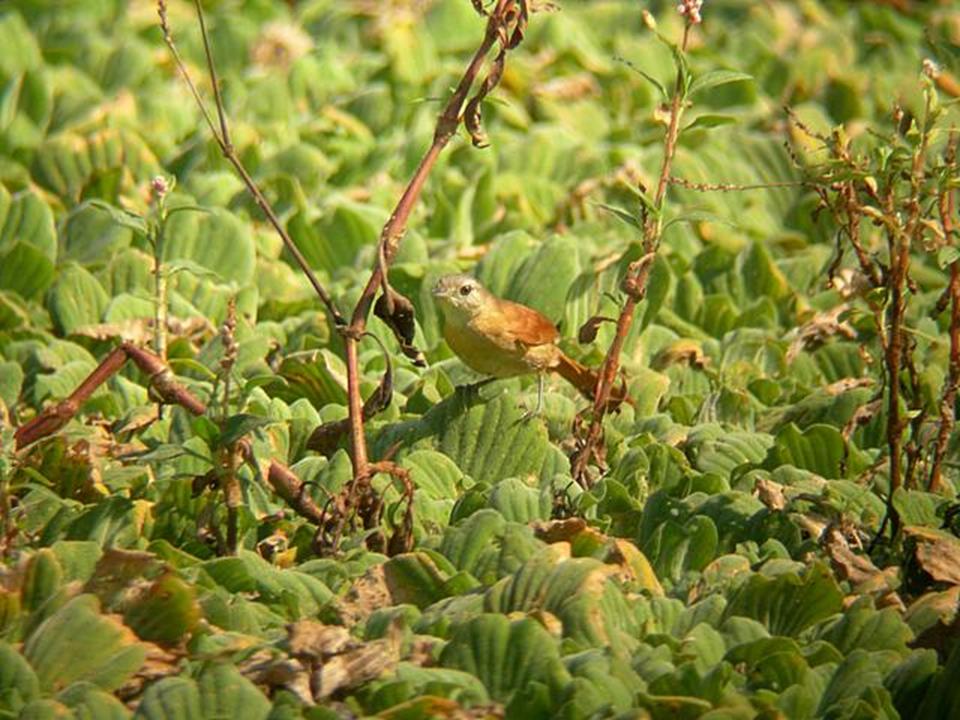
Bahía Negra itself isn´t exactly a booming metropolis. Its population is minimal, so much so that if a car full of people arrives the population of the town goes up a percentage point or two! Around the town you can find interesting species like Chotoy Spinetail, White-bellied Tyrannulet and at night the much sought after Band-tailed Nighthawk wheels around amongst the buildings. Take a night drive in this area though and you are guaranteed a mammal fest. On a single two-hour night-drive in September (not even the peak time of year for mammals) a FAUNA Paraguay tour located ten species of macromammals - Grey Brocket Deer, Tayra, Crab-eating Raccoon, Coati, Azara´s Agouti, Azara´s and Crab-eating Fox, White-lipped and Collared Peccary and best of the bunch a mother tapir taking her baby out for a walk - all those in addition to various nightbirds (owls and nightjars) and smaller mammals such as armadillos. Monkeys are best seen during the day. There are four species up here, the aforementioned Black Howler, the Dusky Titi, the elusive Night Monkey and the tiny Black-tailed Silvery Marmoset.
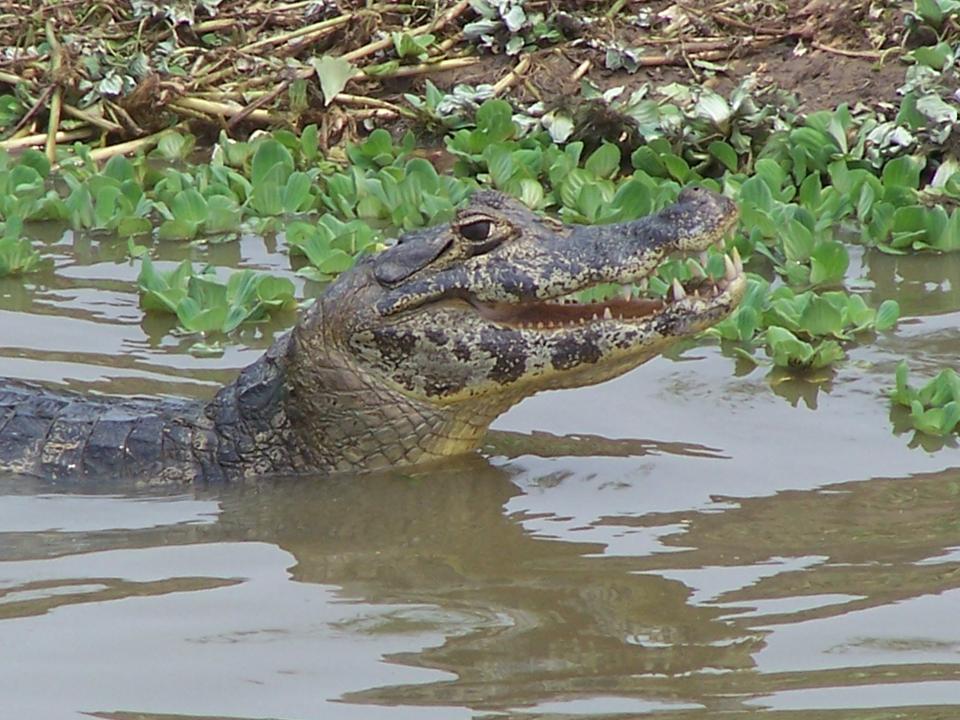
If reptiles and amphibians are more your scene, then get yourself a torch and walk along the riverfront. If you´re not deafened by the frog chorus that kicks off nightly from September to December, then you´ll be able to locate numerous different species without too much difficulty. A good place to start is your bathroom, each one in the town usually has a resident Scinax treefrog.
What the Paraguayan Pantanal lacks in facilities for tourists it more than makes up for in its unspoilt beauty. You may complain about the dirt roads flooding after a heavy rainstorm, but remember that the very reason that the area remains so pristine is the difficulty of access. The likelihood is that if you find yourself in the Paraguayan Pantanal in the first place, then you are someone with a thirst for adventure and an urge to get off the beaten track to where tourists don´t tend to go. Its world´s away from the Brazilian Pantanal - get out there and see for yourself!






